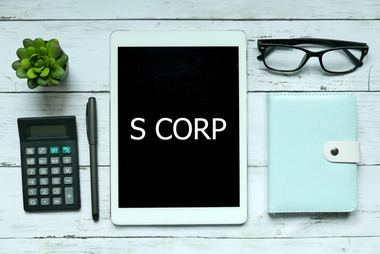What Is an S Corporation, and How Does It Work?
Have you been thinking about establishing an S corporation? Maybe you have the opportunity to become a shareholder of a corporation of this type. Here’s what you should know about S corporations and how they work before getting involved in one:
What is an S corporation?
An S corporation essentially passes its income, losses, deductions and credits to its shareholders for the sake of federal tax purposes. From there, shareholders of S corporations report this information as part of their personal tax returns.
The shareholders are assessed by the IRS at their individual income tax rates, which makes it possible for S corporations to avoid facing double taxation on corporate income come tax season.
How are shareholders taxed?
People within an S corporation who are responsible for performing a service for said S corporation will be paid a wage as an employee, even though these people are also considered shareholders. Also known as corporate officers, those who perform more than minor services to an S corporation and receive — or are entitled to receive — compensation will have to pay federal employment taxes. This is true even in instances when shareholders take distributions, accept dividends or receive other forms of compensation.
What happens if shareholders do not report wages from an S corporation?
Distributions from an S corporation evade the 15% or higher employment tax bracket. This puts small-business owners in a position where they could potentially experience considerable savings.
Now, if shareholders fail to declare wages obtained through an S corporation, the IRS will become interested in whether those payments were genuinely paid in exchange for services rendered. The IRS might impose higher taxes if it finds instances of low salaries coupled with high distributions to be suspicious.
What are the key provisions of an S corporation?
It’s important to note that shareholders are not personally responsible for any liabilities or debts associated with the business endeavors of an S corporation. As a result, creditors are not entitled to make any claims on the personal assets of shareholders when settling debt belonging to the S corporation.
To qualify as an S corporation, the business is required to be registered as a domestic corporation. S corporations are allowed to consider individuals, trusts and estates as shareholders, but corporations, partnerships and individuals who aren’t U.S. residents are not permitted to hold shareholder status.
The total number of shareholders for an S corporation cannot exceed 100. Furthermore, each S corporation is eligible for one class of outstanding stock, and the S corporation must be eligible. In other words, there are certain sales corporations, financial institutions and insurance companies that cannot be classified as an S corporation.
What documents are involved when opening an S corporation?
To officially become an S corporation, you’ll need to fill out and then submit Form 2553, Election by a Small Business Corporation. This document must be signed by all shareholders of your S corporation. You’ll also need to file Form 1120-S, U.S. Income Tax Return for an S Corporation.
All the profits, losses and deductions for each shareholder will be documented via Form 1065, U.S. Return of Partnership Income, which is known as Schedule K-1. Last but not least, S corporation shareholders can expect to file Form 1040, U.S. Individual Income Tax Return, as well as Form 1040 (Schedule E), Supplemental Income and Loss.
Are there important advantages of having an S corporation?
There are undeniable benefits of establishing an S corporation, hence its appeal. For instance, when you adopt the S corporation structure for your business, you’ll end up subsequently lowering the amount of self-employment tax relevant to your company. Additionally, S corporations are viewed as highly credible in the eyes of vendors, partners and customers.
Should you be concerned about the disadvantages of having an S corporation?
There are possible disadvantages you should be aware of when looking at forming an S corporation. For starters, there are many protocols that you must follow when establishing this type of corporation.
As an example, directors and shareholders have to attend scheduled meetings that must last for a certain number of minutes. There also are formalized bylaws that S corporations are required to uphold, not to mention the maintenance of proper records and various corporation-specific recordkeeping requirements.
What happens if you want to transfer ownership of your S corporation?
On the bright side, it is rather easy to transfer interest within an S corporation, especially compared to the same task with other types of business entities.
You can structure the sale in one of two ways:
You can set up an outright sale, where the buyer will make the purchase and ownership is transferred immediately; and alternatively, you can opt for a gradual sale, where the purchase takes place over time. Either way, the transfer of ownership regarding the S corporation needs to be facilitated via an official written sales agreement in order to formalize the process.
Before establishing your business as an S corporation, keep in mind that your company will likely require paying more attention to the accounting and bookkeeping side of things than ever before.
It’s best to onboard the help of qualified accountants who can assist you. Don’t be afraid to contact professionals who can provide you with banking and legal advice when it comes to business loans, taxation laws and other related issues.
©2024


